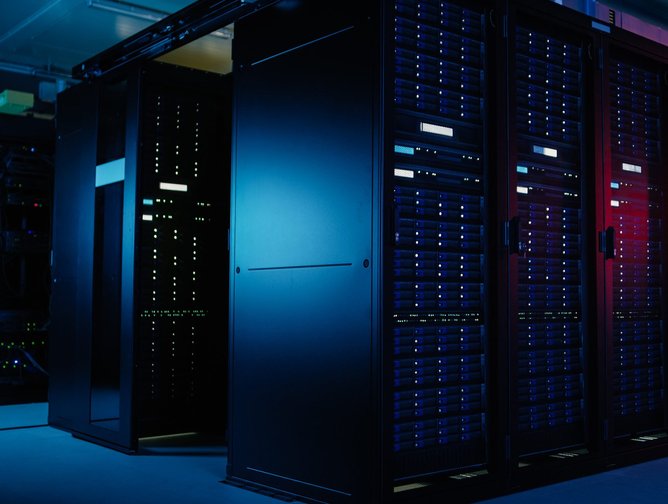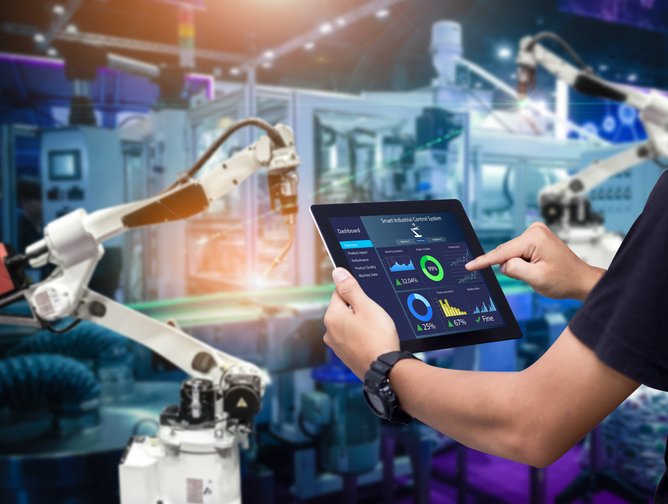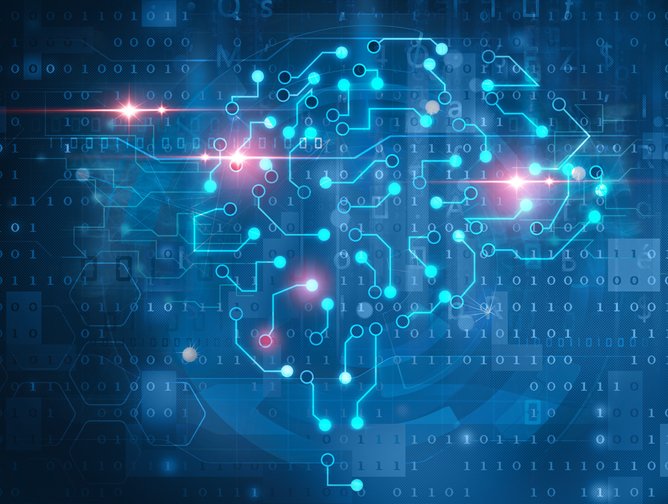Schneider Electric and AI’s disruptive data centre overhaul
There’s no doubt AI has become one of the most prominent buzzwords of the last 12 to 18 months. Constantly hitting headlines around the world, it has become a mainstream technology, transforming people’s lives and the way companies operate.
AI is set to continue disrupting the status quo in the data centre space. Despite presenting the data centre industry with limitless opportunities, to thrive it must be respected, ethically implemented and facilitated — and its physical impact must not be underestimated.
Financially demanding, while putting constraints on water, land and energy supplies, the demands and challenges of AI implementation have been stressed by many, including Schneider Electric.
A global leader in energy management and automation solutions, Schneider Electric boasts a whole host of specialties, including the likes of critical infrastructure and providing innovative technologies for power distribution, cooling and automation, as well as optimising energy efficiency and reliability.
A seasoned IT and technology executive, Natalya Makarochkina is the multinational company’s Senior Vice President (SVP) of its Secure Power Division and has worked for Schneider Electric since 2015. Starting in the business in her native Russia, she moved to Dubai, UAE in 2017 to take up her current position.
Working in Schneider’s Secured Power Division, Makarochkina’s role is part of the company’s services in data centre physical infrastructure solutions for customers in the form of data centres, server rooms and edge computing solutions.
“At Schneider Electric, our slogan is ‘Life is On’, and I'm so proud to be part of a company that lives and breathes this ethos. Beyond Schneider Electric's well-established reputation for sustainability, both globally and within the data centre industry, what truly sets us apart is our commitment to inclusivity. We have developed a groundbreaking whitepaper focused on extending energy access to those on the periphery — an initiative that resonates deeply with our core values.”
The AI Disruption: Challenges and Guidance for Data Center Design
The whitepaper in question, The AI Disruption: Challenges and Guidance for Data Center Design, was released in September 2023, acknowledges the profound impact that AI is having on data centres and the need to accommodate this groundbreaking technology in a sustainable manner.
Calling for AI start-ups, as well as the likes of enterprises, colocation providers and internet giants, to step up and consider the impact of the densities on data centres’ physical infrastructure, the paper talks through the resulting challenges, providing guidance on power, cooling, racks and software management.
“Everyone talks about AI nowadays,” Makarochkina says. “It is something that has had an impact on our lives in a positive way, and naturally has had a major impact on data centres. It is extremely important that the integration of AI applications in data centres be approached in a sustainable manner.”
AI already represents 4.3GW of data centre power demand today, with a projection of that figure potentially growing 26% to 36%, resulting in up to 20GW by 2028.
“This significantly outpaces the growth of data centre power demand at the moment,” Makarochkina adds, sharing that AI already accounts for 11% of data centre power. “We really need to understand how to be more efficient. It’s important to make sure that, when we talk about AI, we’re talking not only about large data centres but also about edge data centres.”
Calling for emphasis on how to monitor and manage edge data centres, as well as how to combine growing AI with sustainability along with climate obligations, Schneider Electric is using its position to pioneer sustainability — where it has saved 440 million tonnes of CO₂, 90 million alone in 2022 — driving meaningful and life-changing innovation.
Makarochkina continues: “Our whitepaper discusses how the disruption caused by AI has led to significant changes and challenges in data centre design and operations, as well as the high demand. We estimate that AI workloads will represent 15% to 20% of the total data centre energy by 2028. The question is, what will we do to adopt it efficiently and handle the requirements of AI applications?”
The report calls for data centres to be optimised with new technologies, accommodating AI workloads and high-density AI clusters to keep up with this ongoing digital evolution.
AI and the modern data centre
“When we talk about digital twins, it means you can design a data centre before you start building it,” Makarochkina details. “This is a fundamental change and a great element in the design and management of data centres.”
The bonuses digital twins bring are immense, including being able to measure and make suitable adjustments, to efficiency and reliability and any subsequent sustainability goals. Makarochkina also maintains that AI must centre on an integrated approach.
“AI is not only in the cloud and in large data centres, but we are also talking about edge data centres, which have to be managed,” she continues. Along with Schneider’s data centre infrastructure management system (DCIM), day-to-day data centre operations can be optimised, whether in a large-scale or edge facility.
AI’s role in the evolution of data centres
Looking to the future, Makarochkina foresees AI having an impact in three distinct areas: power, cooling and physical demands.
She notes: “We estimate the potential increase in energy consumption to be about 20% by 2028, so we are already talking about the huge AI workloads, especially when it comes to training. AI can consume 100KW per rack.
“It is difficult to provide, and it is a really high requirement for efficiency as well as for power challenge. So, interference workloads operating at various rack densities may benefit from high voltage disruption, but also, it's challenging to meet capacity with this existing standard where we have 60 to 63AMP rack power distribution units.
“What’s more, we talk about the change in cooling and people are talking a lot about liquid cooling and air cooling. We're using it a lot and we try to make it as efficient as possible.”
For example, Schneider Electric has economisers, software that makes use of air cooling more efficiently. “When we think about liquid cooling, the transition will bring logical and financial considerations. We predict next year we'll see the continued roll out of liquid cooling in data centres,” Makarochkina adds.
And finally, physical demands. Discussing the requirements for AI clusters, Makarochkina emphasises the need for larger arrays of racks with specific larger dimensions. “They result in a totally different design which will be required for data centres and this will be one of the biggest challenges as well,” she concludes.
Shaping the future
Makarochkina acknowledges that there is nothing stopping the tsunami of the adoption and development of AI, believing that it is at the forefront of shaping the future.
“There is no argument whether we'll have AI or not. When we talk about AI and IoT, then we'll also talk about a totally different new landscape, both in terms of learning as well as processing and using computer visions.”
Makarochkina attests, as does the company she represents, that regulation and ethical implementation is a vital consideration when it comes to AI. And, with its widespread influence and adoption growing at unprecedented speeds, the combination of AI with other emerging technologies is where Makarochkina envisions the upward trajectory of AI catapulting to.
“There are no sectors which will remain untouched by AI,” she says. When incorporated with the likes of 5G, for example, AI can guide and ensure the correct allocation of resources — whether that be detecting anomalies or managing traffic. When combined, AI and 5G — along with edge computing and IoT — can spearhead autonomous cities too. It is one of the main factors behind the success of smart cities.
“If you look at Shanghai for example, you see lots of AI already in play,” adds Makarochkina.
“For example, there is widespread use of face recognition, so much so, that people are not even using their credit cards to make payments in shops anymore. So, when you shop, you take your items to the till and your shopping is automatically billed to your account.”
Despite some applications of AI and its respective emerging technologies feeling like they are still a considerable way off into the future, the technologies needed to bring them into the here and now are in touching distance. And, as both Makarochkina and Schneider Electric are keen to emphasise, to prepare for what’s coming, work is needed today.
Make sure you check out the latest edition of DataCentre Magazine and also sign up to our global conference series - Tech & AI LIVE 2024
**************
DataCentre Magazine is a BizClik brand





